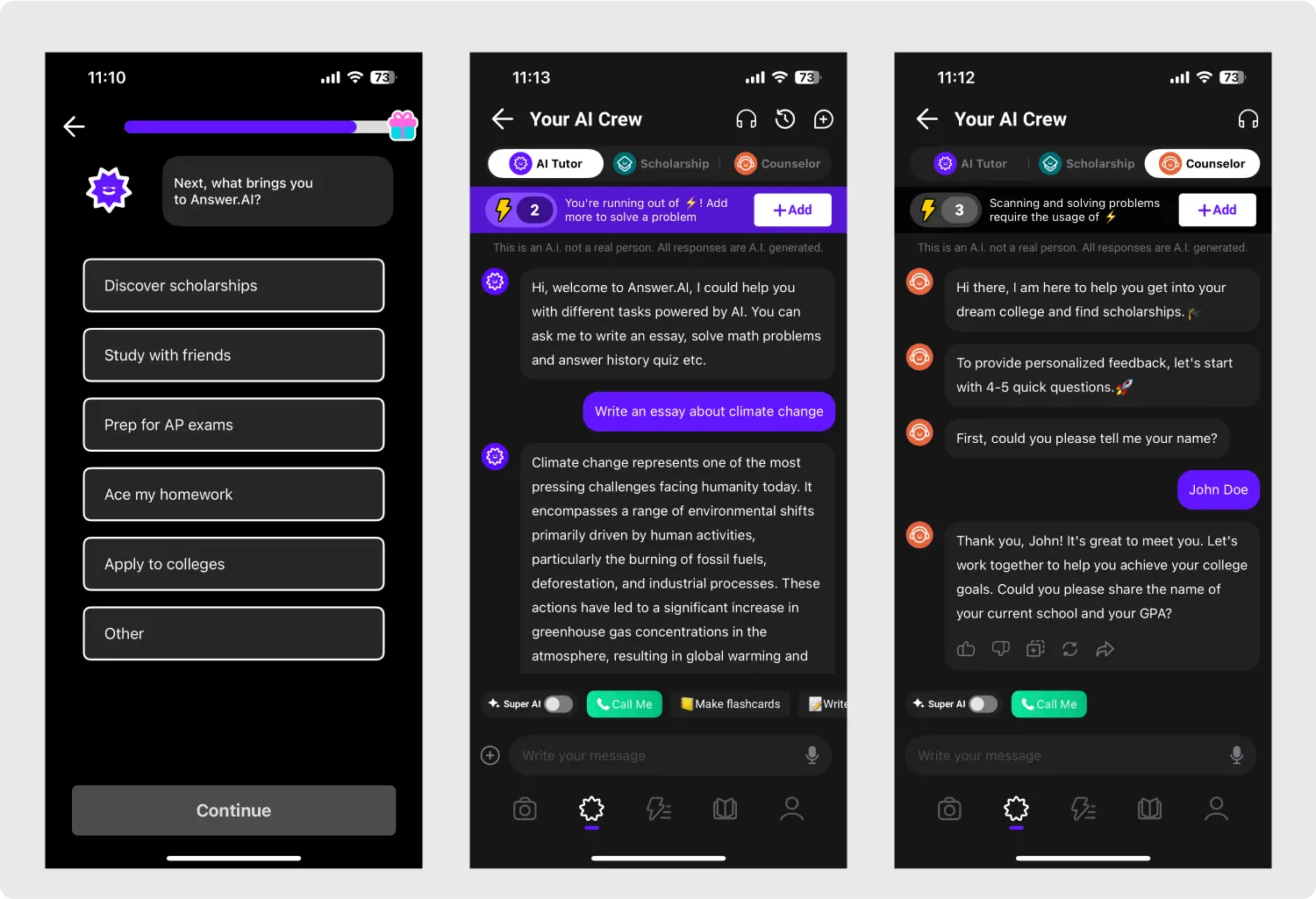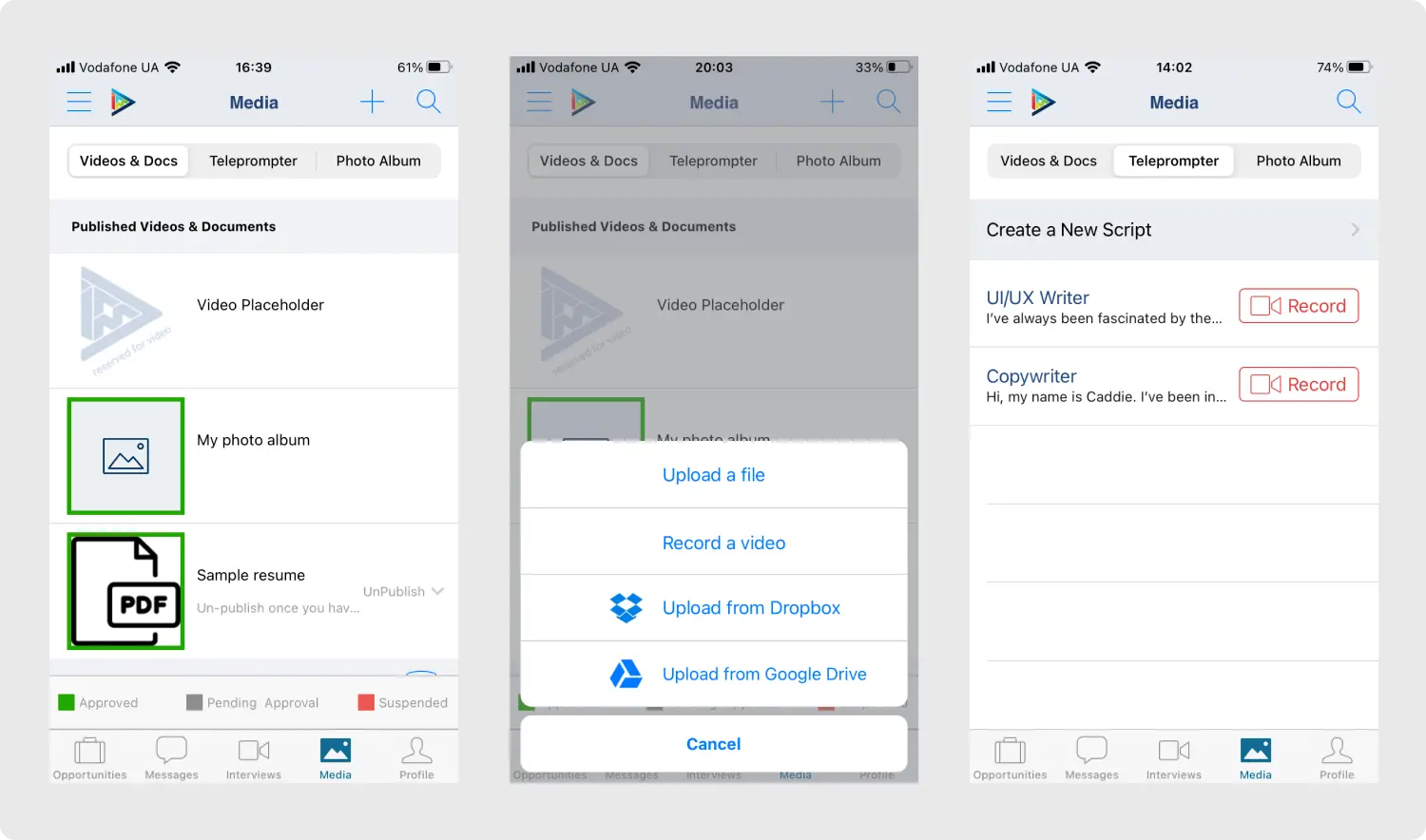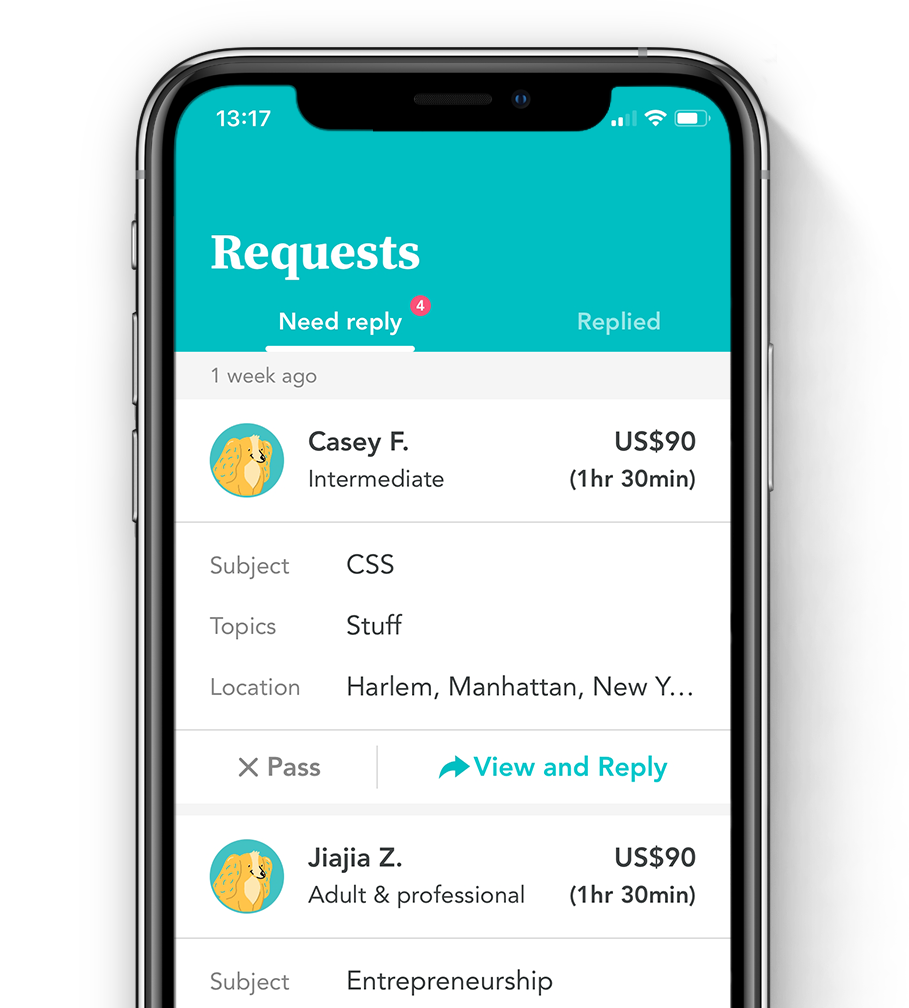Mobile app development trends are filling the agenda of numerous tech conferences, and for a good reason. Mobile app downloads stagnated after the surge caused by the pandemic, which means tech founders, product managers, and CTOs must innovate fast to grow their user bases and ensure their apps remain relevant.
Being a mobile app development company, our team at Redwerk сontinuously monitors the latest trends. This enables us to deliver true value to our clients while supporting them from concept creation to launch. We’ve analyzed what the global market leaders are doing and combined that with insights from our clients’ needs to curate a list of mobile app trends that will dominate 2025, and the years to come.
1. AI and Machine Learning
Generative AI has seen rapid success, and it’s certainly here to stay. Apps that want to remain on their users’ radar must continually think of how to better meet user demands. AI-powered or ML-powered features are some of the most critical expectations. Here are a selection of practical AI use-cases in mobile apps:
- Personalized content & product recommendations
- Real-time language translation
- Writing & proofreading assistance
- Applying filters and effects to photos & videos
- Tracking health metrics and providing personalized insights into one’s wellbeing
- AI-assisted tutoring & language learning
- 24/7 customer support with conversational chatbots
- Identifying fraudulent transactions
With the release of Apple Intelligence, the Cupertino tech giant has empowered not only users, but developers as well. The new APIs and frameworks introduced to Apple’s SDK (software development kit) will allow iOS developers to integrate a range of AI-driven features into their apps—from image generation capabilities, to writing tools, and an enhanced Siri. Of course, adding AI may increase the overall iOS app development cost, but that’s often a necessary investment to sustain long-term success.

Android developers will also see the benefits, gaining the ability to infuse AI features into their apps as well. There are several ways one can implement this technique, let’s use Google as an example. Google already offers two primary options: their Gemini API through Vertex AI, and their Gemini Nano for on-device AI.
2. Social Media Features in Financial Apps
One of the most exciting trends in mobile app development is the convergence of social and financial features. We’re seeing a shift towards apps that do both—manage money and foster social connections. Platforms like Venmo are leading the charge with features like group money pooling, making it easier to split bills, plan trips, and manage shared expenses with friends and family.
What truly makes Venmo stand out is its transaction feed. Venmo allows users to share payment details, add captions or emojis, and interact with each other’s transactions, transforming financial exchanges into social conversations.
These social features create an opportunity for viral marketing—users are more likely to recommend an app that allows them to share experiences, such as pooling money for a trip or wedding, and engage with their network.
3. Mobile & Social Commerce
About 76% of U.S. adults are shopping online using smartphones. As more and more consumers turn to their smartphones for shopping, businesses must optimize their mobile apps for commerce. This means making sure pages load fast, even when they’re image-heavy.
Navigation should also be easy to use, and the checkout process should have as few steps as possible. A seamless cross-device experience will allow customers to start a purchase on their phone and finish it on a laptop, without re-entering items.
This mobile app trend is intertwined with social commerce. Social commerce is the practice of selling products and services directly on social media platforms, allowing customers to shop without leaving the app. TikTok, Facebook, Instagram, and Snapchat are no longer only social media platforms; they are social commerce apps. They offer a native checkout, allowing users to complete purchases without leaving the app, eliminating friction and encouraging impulse buying.
4. Emphasis on Video Content and Streaming
There’s been a significant shift towards integrating video content and live streaming capabilities within apps to enhance user engagement. It’s no wonder that two video-streaming apps, PBS Kids Video and Peacock TV, have already made it to Google’s Best Apps of 2024.
Statista found that a large number of young adults in the U.S. frequently watch videos on their phones. Specifically, 79% of people aged 18 to 34 said they use their smartphones to watch online videos every week.
With its multi-sensory appeal, video content is more engaging and retains user attention longer than text or images, leading to increased app usage and loyalty. Advancements in mobile hardware, as well as faster internet speeds, make video creation & streaming more accessible. Apps with robust video features are more appealing to both users and creators alike.

Video features can be one of the most unique selling points of your product. For example, we helped one of our clients create an innovative recruiting app with a video resume feature as well as a teleprompter, setting them apart from their competitors.
5. Enhanced Safety and Parental Controls
This particular mobile app trend is driven by a combination of factors, like the expanding parental anxieties around online risks, the increasing regulatory pressures, and the constant desire to gain user trust.
One notable example of this trend is Snapchat’s introduction of Location Alerts for Parents. This feature allows parents to receive notifications when their teen arrives at or leaves specific locations, providing peace of mind and enabling proactive communication. Other apps like YouTube Kids and TikTok have implemented age-appropriate content filtering, screen time limits, and parental monitoring tools to safeguard young users.
6. Cross-Platform Development Tools
Frameworks like Flutter, React Native, and Xamarin enable developers to create apps that can run seamlessly on multiple platforms (iOS, Android, and sometimes web) using a single codebase. This approach offers numerous advantages, including significant cost savings, accelerated time-to-market, and smaller maintenance costs.
Additionally, cross-platform development allows businesses to reach a wider audience with a consistent user experience across different devices. For startups, choosing the right cross-platform framework can be a strategic decision that allows them to scale efficiently and respond quickly to market demands.
Prominent apps like eBay, Alibaba, Square, and WeChat were all built with Flutter. At Redwerk, we also favor Flutter over other cross-platform tools because it uses the Dart programming language, which ensures optimized development and performance.
7. Augmented Reality and Virtual Reality
AR/VR will continue to remain on the list of mobile app industry trends. The number of mobile AR users worldwide is continually growing, albeit slowly. Mobile AR is expected to reach 1,19 billion users by 2028. IKEA Place, Snapchat, TikTok, and Pokémon GO are all famous for their fun AR features.
As AR and VR technologies continue to advance, we’ll also see more and more innovative AR companies. Here are some AR-powered features to consider that might be a great fit for your mobile app:
- Virtual try-ons
- Product visualization in real-world settings
- Virtual property tours
- Interactive learning with 3D models, animations, and simulations
- Immersive gaming
- Directions while walking or driving
- Navigation within large buildings like airports, malls, or hospitals
- Maintenance and repair guides
- Information overlay for landmarks, artworks, or exhibits
- Creating engaging ads & social media experiences

8. Wearable Device Integration
The increasing popularity of smart glasses, smartwatches, fitness trackers, and other wearable devices has opened up a world of new opportunities for mobile app developers. By integrating with wearable devices, apps can provide a more personalized user experience. This trend is particularly relevant for the healthcare, fitness, and retail industries. For example, there’s the Meta and Ray-Ban collaboration that recently took the spotlight.
Now let’s get industry-specific. Apps focused in healthcare can track vital signs, monitor medication adherence, and send timely alerts to users’ wrists. Fitness apps can provide real-time fitness metrics, personalized workout plans, and motivation reminders. Through wearable devices, retail apps can enable contactless payments, product information, and loyalty program rewards.
9. App Security: Privacy and Data Protection
Emphasis on app security is undoubtedly one of the most important mobile app development trends. Protecting your user’s sensitive data and preventing data breaches are crucial efforts. A secure app can enhance your reputation and attract more users. Enhanced security will also help you comply with regulations like GDPR and CCPA, avoiding potential legal issues. Plus, unique security features can give your app a competitive edge in a crowded market.
Here are some privacy and data protection features to consider when designing your app:
- Encryption of data in transit and at rest: Utilizes protocols like TLS/SSL for data transmission and AES for data storage
- Biometric authentication: Uses fingerprints, facial recognition, or iris scans for secure login
- Multi-factor authentication: Requires additional verification steps, such as one-time passwords (OTPs) or biometric data
- Lockdown mode: Limits certain app functionality and system interactions
- Fraud detection algorithms: Monitor transactions for unusual activities using AI and ML
- Device binding: Associates user accounts with specific devices to prevent unauthorized access
10. Blockchain for Mobile Apps
Blockchain has some important key advantages, such as security, transparency, and decentralization. These all help address critical concerns around data integrity and trust. By incorporating blockchain, mobile apps can offer secure transactions, decentralized data storage, and smart contracts that automate processes without intermediaries.
Startups can gain a competitive edge by integrating blockchain into their mobile apps. Cryptocurrency wallets, DeFi platforms, and supply chain tracking apps are prime examples of blockchain-powered mobile applications.
Redwerk has hands-on expertise in blockchain development. We built Tingl, a web3 messenger for exclusive chat privacy. It relies on blockchain technology for end-to-end encryption, data integrity, and anonymous communication. By combining a custom transport protocol with a Proof-of-Stake consensus mechanism, we ensured the security and privacy of user messages.
11. Predictive Analytics
Predictive analytics allow developers to anticipate users’ needs and behaviors. By analyzing vast amounts of data with advanced algorithms and ML, apps can identify patterns & trends and tailor experiences to individual users. Here are some prime examples of industry leading apps that utilize predictive analytics.
Duolingo uses predictive analytics to recommend the most relevant language lessons based on a user’s progress and areas of struggle. Waze leverages this technology to predict traffic conditions and suggest the fastest routes. Uber uses it to balance supply and demand by anticipating areas of high demand and adjusting pricing to attract more drivers. Spotify recommends songs and artists based on a user’s listening history and introduces them to new music they might enjoy.
Numerous companies continue to invest in predictive analytics because it enhances user satisfaction, drives retention, and fosters brand loyalty. This mobile app trend will certainly stand the test of time.
12. 5G Technology
The rollout of 5G technology brought faster speeds, improved connectivity, and a host of new possibilities both for developers and users. 5G is becoming more widespread, and its influence on mobile app development is impossible to ignore. Nearly 40% of US wireless devices are now 5G-connected, driving the need for app optimization.
Source: Statista
Now it’s time to think about how 5G can enable new functionalities in your app. For instance, you could incorporate AR/VR elements, real-time data analytics, or high-definition video content. Prioritize the features that will add value and align with your business goals.
The best way to prepare your app for the 5G era is to review your app’s architecture and codebase , which will eliminate bottlenecks that could hinder performance. Remember, it’s important to enhance your security measures as well.
13. On-Demand Apps
Building on-demand apps is definitely not a new mobile app trend. However, this business model aligns perfectly with modern consumers’ preferences for convenience and immediacy. Advancements in mobile technology, GPS, and payment systems have made it easier to develop reliable on-demand platforms.
On-demand apps are often associated with food delivery apps like DoorDash, Grubhub, or Lieferando, and ride-sharing apps like Uber, Lyft, or Bolt. However, the on-demand model is expanding into new sectors, including:
- Education: On-demand tutoring and educational content
- Logistics: Freight and delivery services for businesses
- Professional Services: Legal advice, financial consultations, and medical second opinions
- Sustainability: Electric vehicle charging and eco-friendly home services
- Tourism: On-demand booking of local activities and tours
At Redwerk, we have years of experience in building on-demand apps. We helped Gooroo develop a robust mobile app for tutors, which simplifies the provision and management of online tutoring services.
14. Super Apps
Super apps consolidate multiple services into a single platform, eliminating the need for various apps. By bundling services, super apps increase user retention and deter competition.
WeChat, a popular messaging app in China, has evolved into a multifunctional platform that encompasses messaging, social media, mobile payments, ride-hailing, and even gaming. Alipay, another Chinese tech giant, provides a comprehensive suite of financial services, including online payments, wealth management, and insurance. LINE is a Japanese messaging app that offers games, digital payments (LINE Pay), shopping, taxi services, job listings, and even healthcare consultations.
While it’s true that super apps are more popular in Asia, there’s a growing interest in other regions of the world. Revolut, for example, a European fintech app, offers banking services, cryptocurrency exchange, stock trading, and budgeting tools, aiming to become a financial super app.
15. Voice Search and Voice User Interfaces
Voice assistants like Siri, Alexa, and Google Assistant have popularized voice search and voice user interfaces (VUIs). 64% of the US Gen-Z population has been forecasted to use voice assistants on a monthly basis in 2027, a large increase from 51% in 2023.
VUIs also provide hands-free interactions, making apps more accessible and convenient. Integrating voice capabilities can enhance user experience by enabling natural language commands and faster access to app functionalities.
As natural language processing & voice recognition technologies continue to improve, we’ll see more sophisticated and personalized voice assistants. Here are some practical use cases for integrating voice-enabled features into your mobile app:
- Touchless navigation through voice commands
- Voice-activated search
- Setting reminders
- Asking questions or retrieving information from apps
- Composing messages, emails, or notes using voice input
- Assisting users with visual impairments or motor disabilities to perform daily tasks
- Using voice recognition to provide feedback on pronunciation accuracy
- Logging meals & workouts by speaking
- Managing media playback functions like play, pause, skip, and volume control using voice commands
Summing Up
Trends in mobile app development are known for having a long lifespan. While AI has undeniably taken center stage as the latest trend in mobile apps, it’s not like it hasn’t been used before. The thing is, AI has just become more mainstream. All the technologies and business models we’ve listed here have already been adopted by some market players, and they will give rise to new, even more ground-breaking startups.
If you have an idea of how to keep your mobile app trending or are just testing the waters for building the next big thing, feel free to reach out to Redwerk for a professional consultation. Since 2005, we’ve successfully delivered over 250 projects for businesses across North America and Europe. We can help you implement your vision in a timely and stress-free fashion so that you’re always on top of your game.
See how we helped Gooroo
build an on-demand iOS app for tutors
and get 90% of five-star reviews



